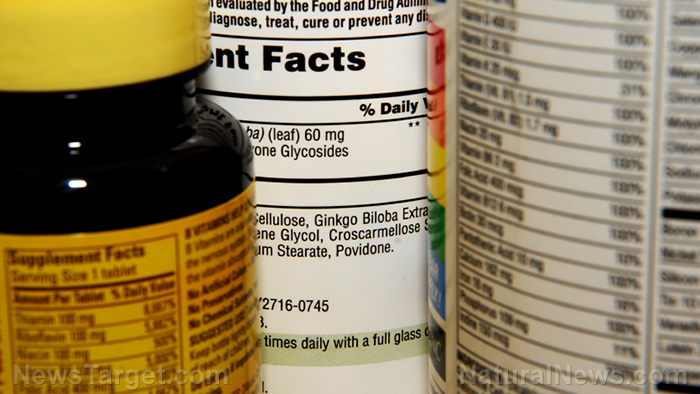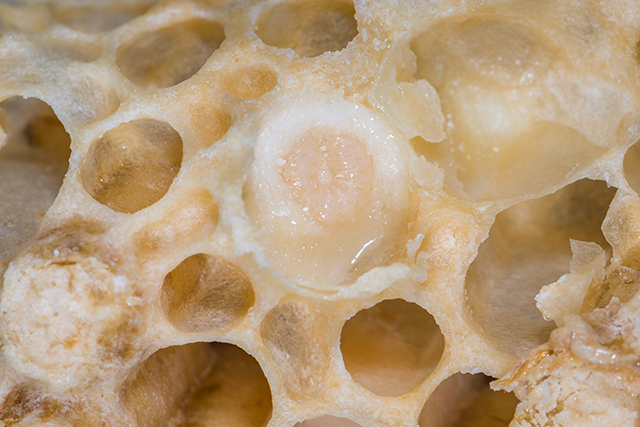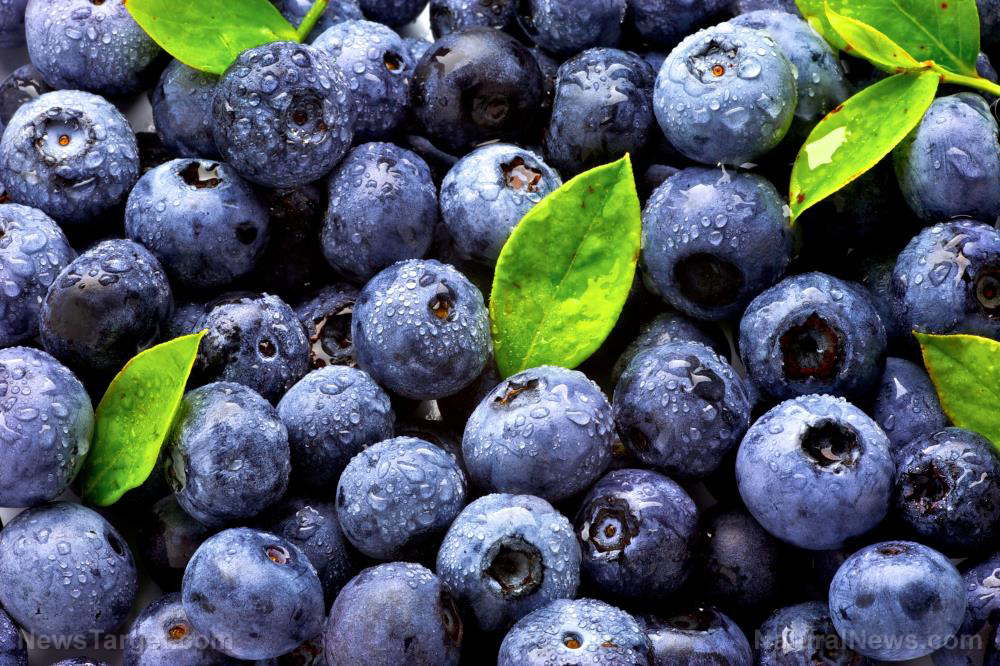Top pharma-brand of children’s vitamins contains aspartame, GMOs, & other potentially hazardous chemicals
07/28/2023 / By News Editors

The #1 Children’s Vitamin Brand in the US contains ingredients that most parents would never intentionally expose their children to, so why aren’t more opting for healthier alternatives?
(Article by Sayer Ji republished from GreenMedInfo.com)
Kids vitamins are supposed to be healthy, right? Well then, what’s going on with Flintstones Vitamins, which proudly claims to be “Pediatricians’ #1 Choice”? Produced by the global pharmaceutical corporation Bayer, this wildly successful brand features a shocking list of unhealthy ingredients, including:
- Aspartame
- Cupric Oxide
- Coal tar artificial coloring agents (FD&C Blue #2, Red #40, Yellow #6)
- Zinc Oxide
- Sorbitol
- Ferrous Fumarate
- DL-alpha tocopherol (synthetic vitamin E)
- Hydrogenated Oil (Soybean)
- GMO Corn starch
The Bayer Health Science’s Flintstones product page* designed for healthcare professionals leads into the product description with the following tidbit of information:
“82% of kids aren’t eating all of their veggies1. Without enough vegetables, kids may not be getting all of the nutrients they need.”
References: 1. Lorson BA, Melgar-Quinonez HR, Taylor CA. Correlates of fruit and vegetable intakes in US children. J Am Diet Assoc. 2009;109(3):474-478.
The implication? That Flintstones vitamins somehow fill this nutritional void. But let’s look a little closer at some of these presumably healthy ingredients….
ASPARTAME
Aspartame is a synthetic combination of the amino acids aspartic acid and l-phenylalanine, and is known to convert into highly toxic methanol and formaldehyde in the body. Aspartame has been linked to over 40 adverse health effects in the biomedical literature, and has been shown to exhibit both neurotoxicity and carcinogenicity [1] What business does a chemical like this have doing in a children’s vitamin, especially when non-toxic, non-synthetic non-nutritive sweeteners like stevia already exist?
CUPRIC OXIDE
Next, let’s look closer at Cupric Oxide, 2mg of which is included in each serving of Flinstone’s Complete chewable vitamins as a presumably ‘nutritional’ source of ‘copper,’ supplying “100% of the Daily Value (Ages 4+), according to Flintstones Vitamins Web site’s Nutritional Info.[2]
But what is Cupric Oxide? A nutrient or a chemical?
According to the European Union’s Dangerous Substance Directive, one of the main EU laws concerning chemical safety, Cupric Oxide is listed as a Hazardous substance, classified as both “Harmful (XN)” and “Dangerous for the environment” (N). Consider that it has industrial applications as a pigment in ceramics, and as a chemical in the production of rayon fabric and dry cell batteries. In may be technically correct to call it a mineral, but should it be listed as a nutrient in a children’s vitamin? We think not.
COAL TAR ARTIFICIAL COLORING AGENTS
A well-known side effect of using synthetic dyes is attention-deficit hyperactivity disorder. For direct access to study abstracts on this topic view our Food Coloring research page. There is also indication that the neurotoxicity of artificial food coloring agents increase when combined with aspartame,[3] making the combination of ingredients in Flintstones even more concerning.
ZINC OXIDE
Each serving of Flinstones Complete Chewable vitamins contain 12 mg of zinc oxide, which the manufacturer claims delivers 75% of the Daily Value to children 2 & 3 years of age. Widely used as a sun protection factor (SPF) in sunscreens, The EU’s Dangerous Substance Directive classifies it as an environmental Hazard, “Dangerous for the environment (N).” How it can be dangerous to the environment, but not for humans ingesting it, escapes me. One thing is for sure, if one is to ingest supplemental zinc, or market it for use by children, it makes much more sense using a form that is organically bound (i.e. ‘chelated’) to an amino acid like glycine, as it will be more bioavailable and less toxic.
SORBITOL
Sorbitol is a synthetic sugar substitute which is classified as a sugar alcohol. It can be argued that it has no place in the human diet, much less in a child’s. The ingestion of higher amounts have been linked to gastrointestinal disturbances from abdominal pain to more serious conditions such as irritable bowel syndrome.[4]
FERROUS FUMARATE
The one clear warning on the Flinstone’s Web site concerns this chemical. While it is impossible to die from consuming iron from food, e.g. spinach, ferrous fumarate is an industrial mineral and not found in nature as food. In fact, ferrous fumarate is so toxic that accidental overdose of products containing this form is “a leading cause of fatal poisoning in children under 6.” The manufacturer further warns:
Keep this product out of reach of children. In case of accidental overdose, call a doctor or poison control center immediately.
DL-ALPHA TOCOPHEROL ACETATE
This synthetic, petrochemically derived analogue of vitamin E consists of 8 different chemical molecules, all of which have questionable bioactivity and safety. You can peruse first-hand published literature on its potential toxicity here, and our recent report on concerning indications that this mix of chemicals may adversely affect immune function, gene expression, and neurological health in the very young: What Is This Petrochemical “Vitamin” Doing In Infant Brains?
HYDROGENATED SOYBEAN OIL
Finding hydrogenated oil in anything marketed to children is absolutely unacceptable. These semi-synthetic fatty acids incorporate into our tissues and have been linked to over a dozen adverse health effects, from coronary artery disease to cancer, violent behavior to fatty liver disease.[5]
GMO CORN STARCH
While it can be argued that the amount of GMO corn starch in this product is negligible, even irrelevant, we disagree. It is important to hold accountable brands that refuse to label their products honestly, especially when they contain ingredients that have been produced through genetic modification. The ‘vitamin C’ listed as ascorbic acid in Flintstones is likely also produced from GMO corn. Let’s remember that Bayer’s Ag-biotech division, Bayer CropScience, poured $381,600 of cash into defeating the proposition 37 GMO labeling bill in California. Parents have a right to protect their children against the well-known dangers of genetically modified foods and the agrichemicals that contaminate them, don’t they? GMO corn starch is GMO, plain and simple. We’d appreciate it if Bayer would label their “vitamins” accordingly.
In summary, Bayer’s Flintstone’s vitamin brand is far from a natural product, and the consumer should be aware of the unintended, adverse health effects that may occur as a result of using it.
So, what’s the alternative? We encourage our readers to strike to the root problem of nutritional deficiencies: poor food quality and selection. Organic, local, sustainable, and traditionally prepared food in line with an ancestral diet is the way to go. Failing that, look into whole food concentrates and whole food supplements. Nature, and not the chemist’s laboratory, is where we will all find the best solution.
Read more at: GreenMedInfo.com
Submit a correction >>
Tagged Under:
artificial sweeteners, aspartame, Bayer Health Science, Big Pharma, children's health, children's vitamins, coal tar, Cupric Oxide, ferrous fumarate, Flintstones vitamins, GMO corn starch, nutrients, pharmaceutical fraud, poison, products, sorbitol, supplements, toxic chemicals, toxic ingredients, toxins, unhealthy ingredients, zinc oxide
This article may contain statements that reflect the opinion of the author
RECENT NEWS & ARTICLES
consumerwellness.info is a fact-based public education website published by consumerwellness.info
All content copyright © 2023 by consumerwellness.info
Contact Us with Tips or Corrections
All trademarks, registered trademarks and servicemarks mentioned on this site are the property of their respective owners.




















